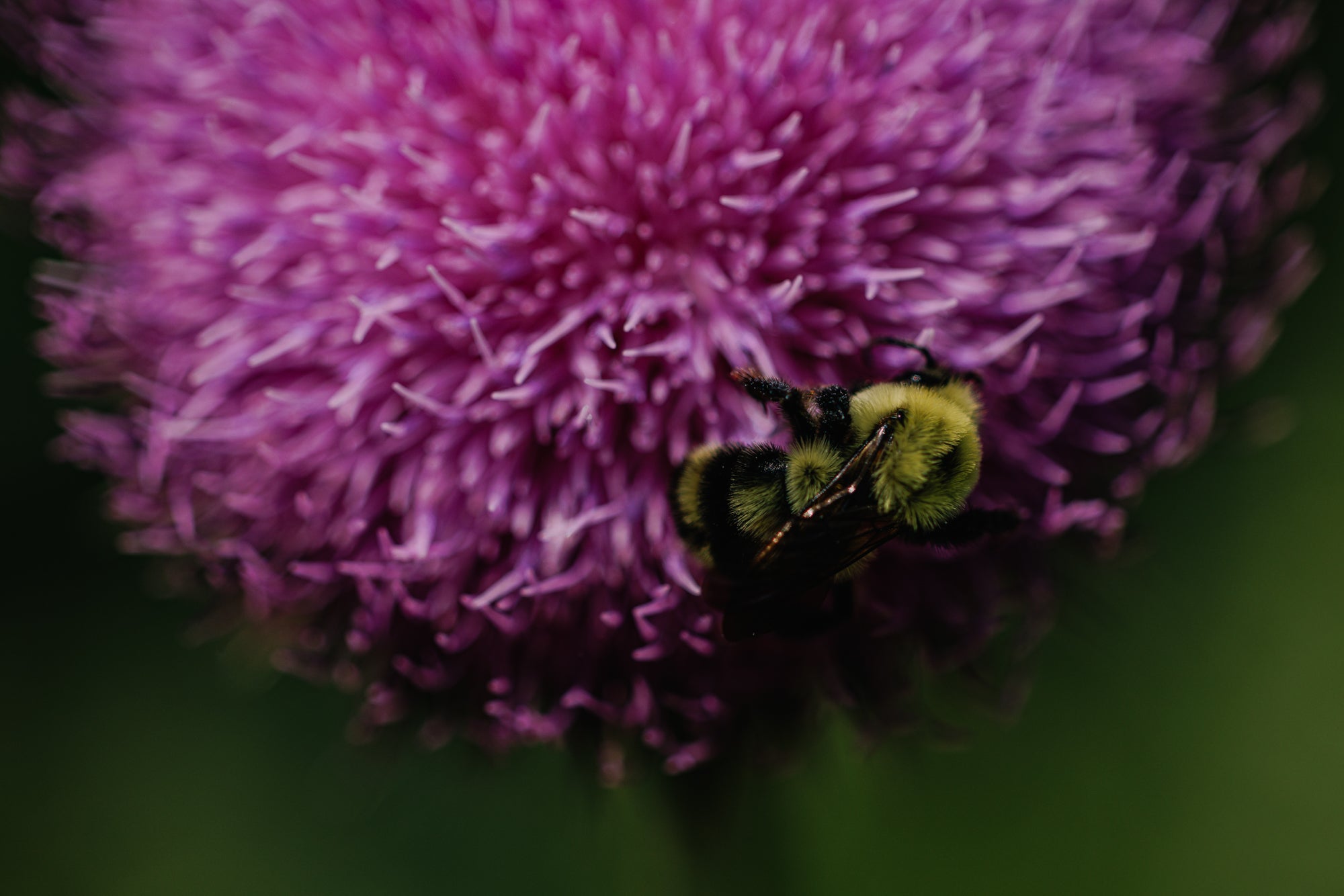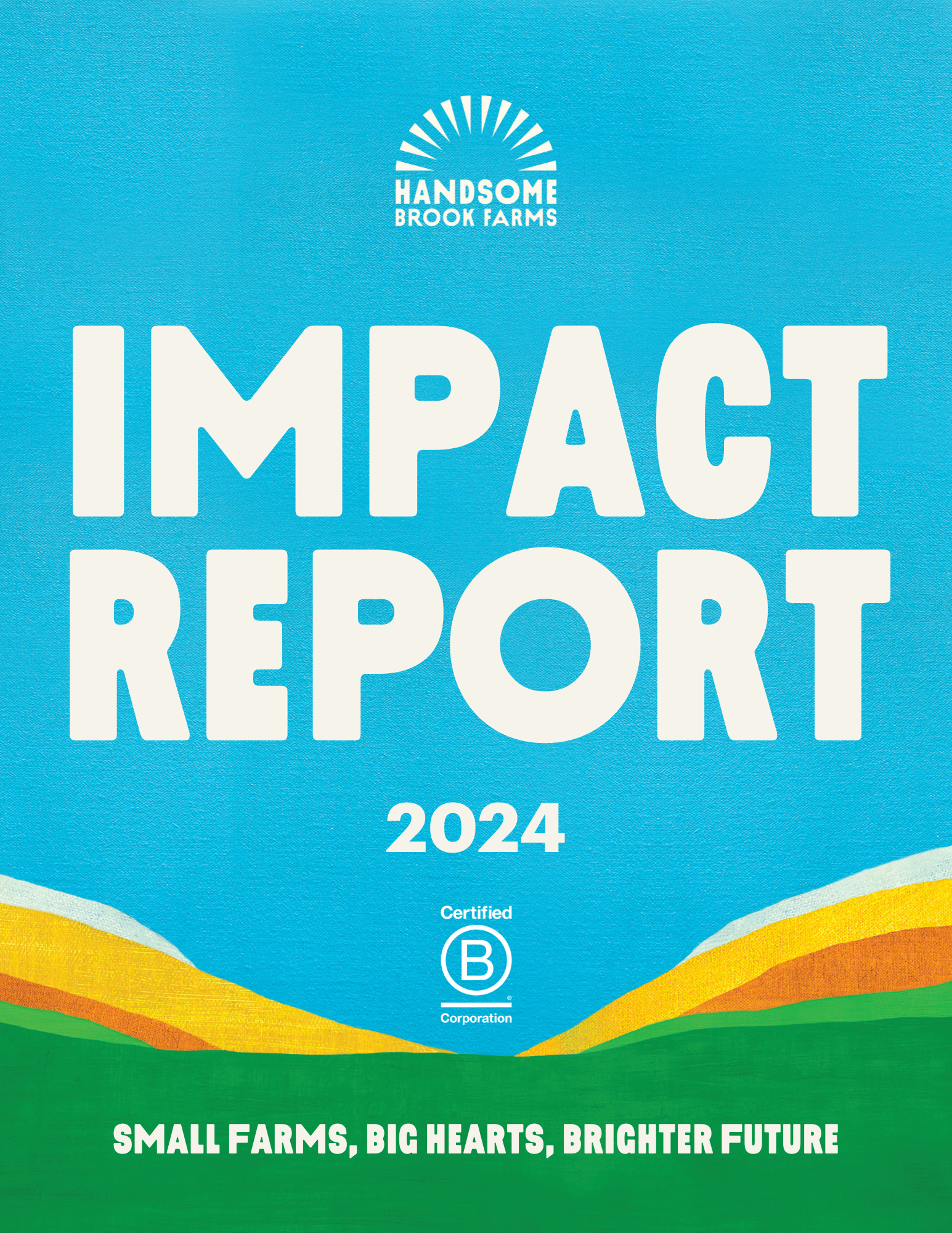Handsome Brook Farms Celebrates Pollinators

Handsome Brook Farms is taking a closer look at how pasture-raised hens impact pollinator habitats!
Pollinators are crucial to food production. Over 85 percent of the world’s flowering plants, including more than two-thirds of the world’s crops, depend on pollinators. Modern-day pollinator species are at risk of habitat loss due to pesticide use, lack of biodiversity, and extreme weather patterns fueled by climate change.
Pollinators thrive in Handsome Brook Farms’ organic pasture-raised hen model because of organic pasture land and natural fertilization from the hens. As part of Regenerative Egg Farming Project (REFP), Handsome Brook Farms’ USDA Conservation Innovation Grant, HBF’s Climate-Smart Scientist and University of Kentucky (UKY) Researcher, Karina, determines the biodiversity of pollinator communities on ten HBF research farms in Kentucky. She measures how regenerative practices impact hens, pollinators, and the whole farm ecosystem.
To identify how many types and species of pollinators there are on each farm, Karina uses two main pollinator survey methods - vane traps and pan traps.
Vane traps simulate pollinator habitats by luring flying pollinators, primarily bees, into blue and yellow tube-like structures affixed to a cup with soapy water a few feet off the ground on a shepherd’s hook. The blue and yellow colors simulate UV light, and are therefore more enticing to flying pollinators. Vane traps are set out for seven days in different areas of the pasture to collect a representative sample of pollinators in the area.
Pan traps are white, yellow, and blue dishes that sample the abundance and diversity of pollinators on the ground. Karina disburses 15 to 30 pan traps in different pasture areas for 24 hours.
Next, Karina manuevers a large sweep net through the pastures for ten minutes at a time to determine which species are present. Using these different sampling methods, Karina and her team at UKY identified that truebugs, flies, beetles, and bees were most prevalent across all ten research farms.
Let's a closer look at the most prevalent groups Karina identified!

Truebugs: Across the ten research farms, truebug pollinators, in the order “hemiptera”, were the most prevalent. Truebugs encompass over 80,000 species and include cicadas, aphids, planthoppers, and leafhoppers. Truebugs are plant feeders, predators, and parasitic species. Plant-feeding truebugs like aphids can be destructive, but most others, particularly predator species, are beneficial to pollinator ecosystems.
Flies: Flies were the second most abundant pollinators found on the ten research farms. Flies are critical pollinators in agricultural systems. In some cases, according to research conducted at Penn State, flies can provide more consistent pollination in early Spring than bees because they are often active at cooler temperatures.
Beetles: Beetles were the third most abundant pollinators found across the ten research farms. Beetles are known as “mess and soil” pollinators because they eat petals and flower parts and defecate within flowers. Beetles are especially helpful pollinators for ancient species like magnolia and spicebush.
Bees: Bees were the fourth most abundant pollinators found across the ten research farms. There are over 4,000 species of native bees in the United States that need pollen and nectar from a variety of flowers to survive. Bees pollinate fragrant and minty plants that are open during the daytime.
As the research farms incorporate more regenerative practices, Karina hypothesizes that all pollinator groups will increase in abundance and biodiversity.
Learn more about how you can plant a pollinator-friendly garden in your region through the Pollinator Partnership’s Ecoregional Planting Guides.











